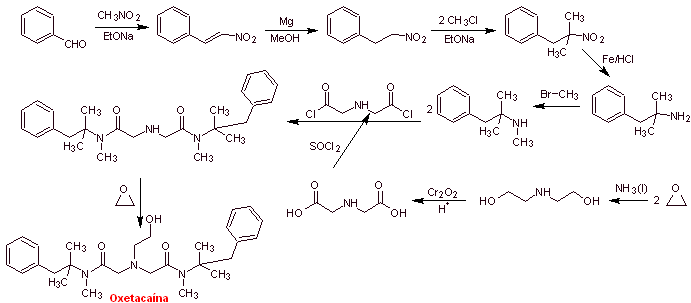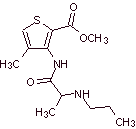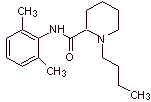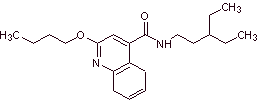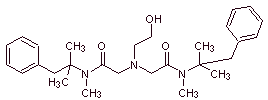Synthesis of local anesthetics derived from phenylacetamides
A list of the main components of this group of anesthetics is presented next:
Lidocaine (lignocaine, xylocaine), mepivacaine, etidocaine, articaine (carticaine), bupivacaine, prilocaine, dibucaine (cincocaine), ropivacaine, trimecaine, butanylicaine, clibucaine, tolicaine, trimecaine, vadocaine, or xitazaine, anidicaine, dimethisoquin, oxetazin, pyrrocaine, paramoxin, properacaine, oxetacaine.
MOb 19 ; |
|
Retrosynthetic analysis :

Synthesis of
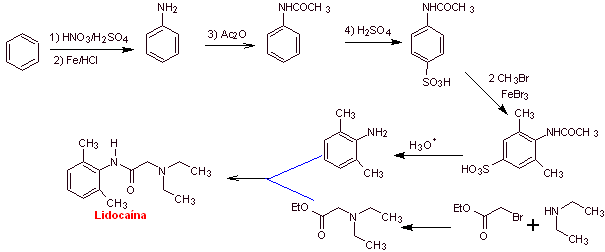
MOb 20: Mepivacaine is a local anesthetic of the amide type, it is faster acting than procaine, but its anesthetic effect is shorter than that of procaine. Like most anesthetics it is supplied as the racemate hydrochloride salt. |
|
Retrosynthetic analysis : The initial disconnection by the amide bond generates two precursor molecules, one of which, 2,6-dimethylaniline, has already been synthesized in
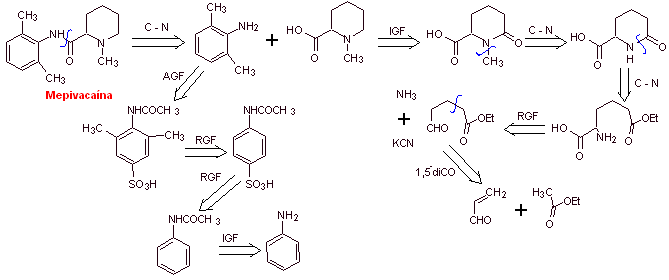
Synthesis of mepivacaine :
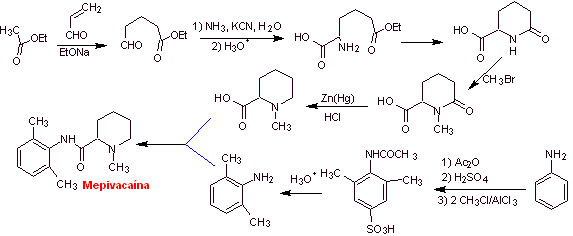
MOb 21: Etidocaine , marketed under the trade name of duranest, is a local anesthetic that is administered by injection and has a long duration of activity, propose a synthesis plan for it, from simple and affordable materials. |
|
Retrosynthetic analysis :
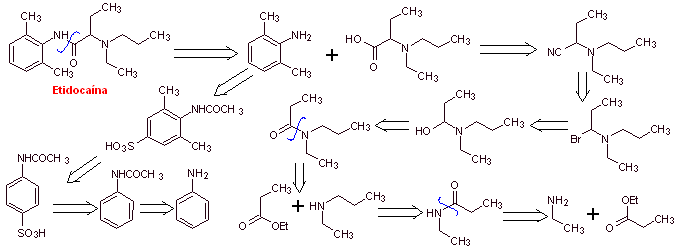
Etidocaine synthesis
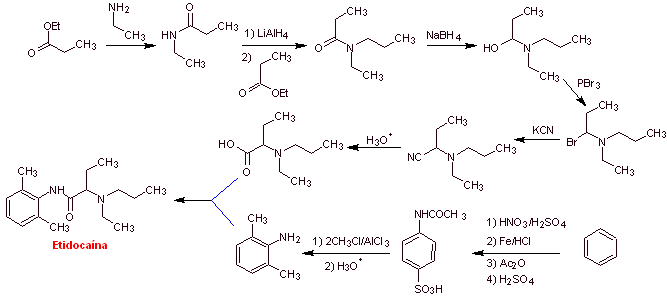
MOb 22: Articaine is a local dental anesthetic. It is the most widely used local anesthetic in several European countries, proposing a synthesis design for this drug. |
|
Retrosynthetic analysis : Disconnection by the amide bond generates the synthetic equivalents
Methyl 3-amino-4-methylthiophene-2-carboxylate and 2-(propylamino)propanoic acid. It is postulated that the amino group of the thiophene derivative is formed from a nitro group and the subsequent simultaneous disconnection of the CS bonds of the ring, allows a glimpse of the dicarbonyl compound used for its preparation,
The nitro group is then used to generate a nucleophile that condenses with dimethyl oxalate by a Claisen-type reaction. On the other hand, the carboxylic acid will have been formed from the acid hydrolysis of a nitrile, an aspect that allows us to postulate another amide as a precursor molecule and it is linked to an ester and an amine as starting materials.
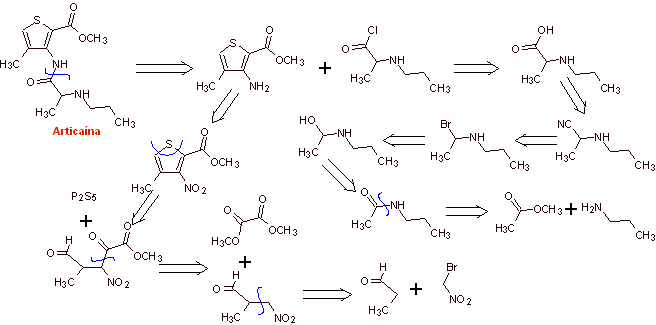
Articaine synthesis :
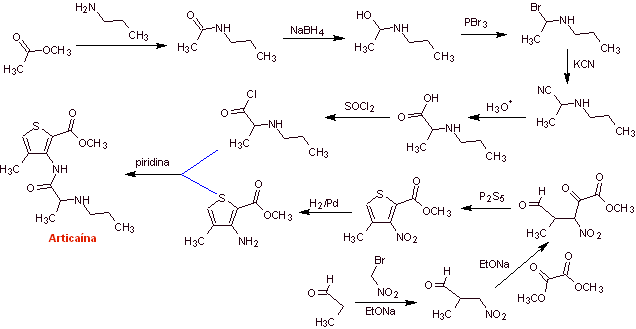
MOb 23 : Bupivacaine (Rinn) is a local anesthetic drug with prolonged duration of its effect, proposing a synthesis design for it, starting from simple and affordable materials. |
|
Retrosynthetic analysis : The precursor molecules present structures, for whose Synthesis there are orientations
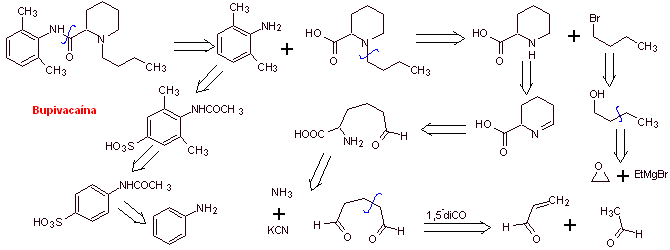
Synthesis of bupivacaine :
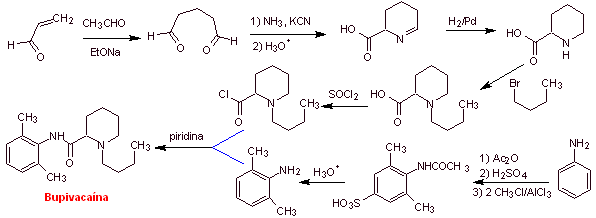
MOb 24 : Prilocaine is a local anesthetic Widely used in its injectable form in dentistry. It is also often combined with lidocaine as a preparation for skin anesthesia (lidocaine/prilocaine or EMLA). Propose a synthesis plan for prilocaine, from simple and affordable materials . |
|
Retrosynthetic analysis :

Prilocaine synthesis :

MOb 25: Cincocaine (or dibucaine ) is a local anesthetic of the amino amide type. It is the active ingredient in some creams to treat hemorrhoids. Propose a synthesis design for this drug. |
|
Retrosynthetic analysis :
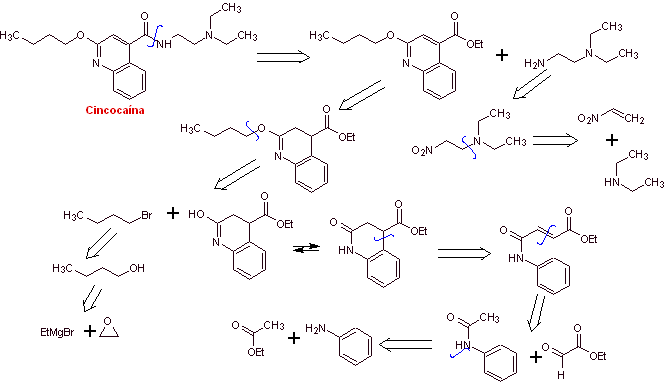
Synthesis of cincocaine :
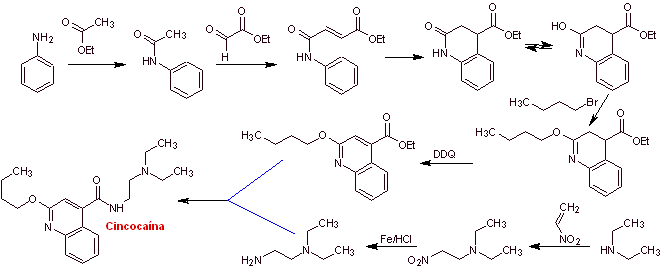
MOb 26 : Ropivacaine is a local anesthetic synthesized after bupivacaine and it is actually the S-enantiomer racemate of ropivacaine hydrochloride. It is stated that it presents less cardiotoxicity than bupivacaine. Propose a synthesis design for this drug. |
|
Retrosynthetic analysis :
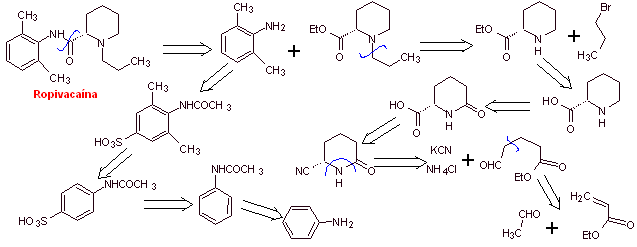
Synthesis of ropivacaine :
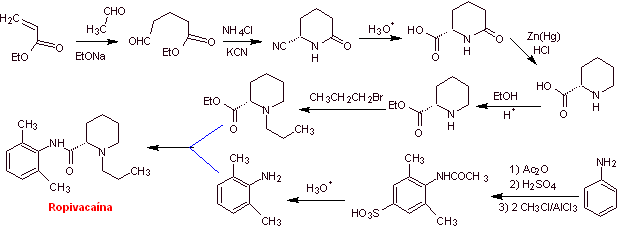
MOb 27 : Trimecaine is an organic compound used as
local anesthetic and cardiac antiarrhythmic. It is a white crystalline powder soluble in water and ethanol. Propose a synthesis plan for this drug. |
|
Retrosynthetic analysis :

Synthesis of trimecaine :
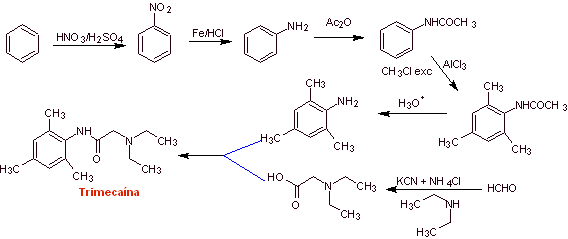
MOb 28. Oxetacaine , also known as oxethazaine, It is a powerful local anesthetic. It is given orally (usually in combination with an antacid) for the relief of pain associated with ulcer disease. It is also used topically in the treatment of hemorrhoid pain. Propose a synthesis plan for this drug. |
|
Retrosynthetic analysis: First, the alcohol is disconnected and then the amide function is followed. As the amine is highly substituted on the carbon to which it is attached, the preparation of these precursor molecules can be outlined through a suitable nitroderivative, as can be seen in the following retrosynthetic analysis:
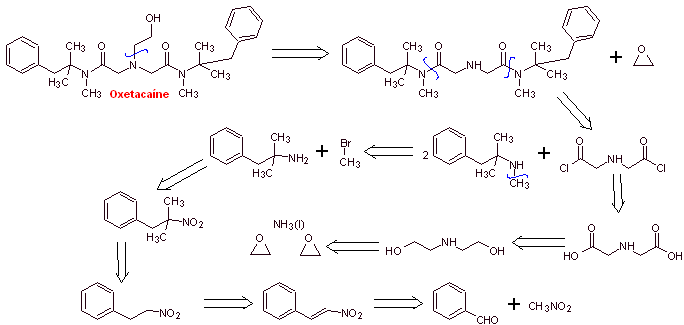
Synthesis of oxetacaine:
